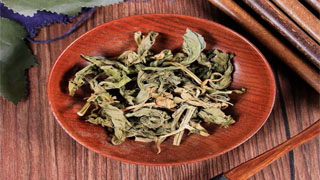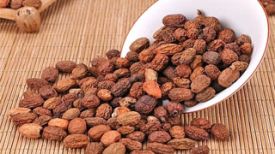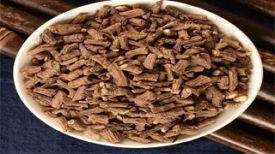
1. Aliases
Vanilla, Lingling Fragrance, Mengzhou Lingling Fragrance, Paicao, Lingling Fragrance, Lavender, Guanglingling Fragrance, Fumigated Grass.2. Plant morphology
Perennial herbs. The stem has narrow winged edges, and the old stem crawls to take root. The current year's stem is nearly erect and 15-30 centimeters tall. Leaves alternate, membranous papery, broadly ovate or elliptical, apex gradually pointed, base extending downwards, edges entire or shallowly wavy; The petiole has narrow wings. Yellow flowers with long stalks, solitary in the upper leaf axils; Calyx 5 deeply divided to the base, lobes ovate lanceolate; Corolla wheel shaped, with 5 elongated lobes; The stamens are much shorter than the corolla, and the apical pores of the anthers crack. Capsule nearly spherical, grayish white. The flowering period is from April to May.
3. Origin distribution
Born in the damp and fertile soil under the valley forest. Distributed in Guangdong, Guangxi, and Yunnan.
4. Harvesting and processing
Harvest in autumn. Extract the entire plant, shake off the mud and sand, dry or shade dry, and tie into small bundles. It is not advisable to wash or expose to sunlight to avoid weakening the aroma.
5. Characteristics of medicinal herbs
The whole grass is an irregular mixture of stems and leaves. Rooted, brownish black. The stem is slender, often slightly twisted, with a diameter of 2-3 millimeters. It is gray green to purple brown, unbranched or less branched, with longitudinal lines and three winged edges. The lower nodes often have adventitious roots. Slightly brittle in texture, with a triangular cross-section and a yellow white color. Leaves alternate, ovate to broadly ovate, 4-10 cm long and 3-6 cm wide, with blunt tips, base extending downwards, and obvious veins. Sometimes yellow flowers with long stalks and spherical capsules can be seen between the leaf axils, with persistent sepals, thin skin, and many small brownish black seeds. The aroma is fragrant and the taste is slightly sweet.
6. Nature, taste, and meridian tropism
Mild in nature, with a spicy and sweet taste. Gui Lung Meridian
7. Effect and function
Clearing heat, promoting qi circulation, relieving pain, and expelling roundworms. Belonging to insecticides.
8. Clinical applications
Dosage of 3-9 grams, decoct or powder into pills; For external use in moderation, rinse with boiling water. Used to treat nasal congestion, cold, headache, dysentery, nocturnal emission, toothache, chest and abdominal distension, and roundworm disease.
9. Pharmacological research
Lingxiangcao decoction (750% concentration) has an inhibitory effect on influenza virus in vitro and in chicken embryos. Preliminary experiments have shown that the total glycosides of this product may have an inhibitory effect on mouse fertilization and implantation.
10. Chemical composition
Hay contains 0.21% aromatic oil, and 59 components have been identified in the oil. Among them, the content of hexahydroacacetyl acetone, such as hexadecylate and heptadecanoic acid, is relatively high.
11. Taboos for use
Not yet clear, use medication with caution.
12. Compatibility prescription
① Treat colds, headaches, and bloating in the chest and abdomen: 9-15 grams of lingxiangcao stems and leaves. Water decoction (Hunan Pharmacopoeia)
② Treatment of Ascariasis: 9-15 grams of Ascaris worm grass (Lingxiangcao). Boil in water, take orally once before bedtime; You can also take 15-30 grams of fresh leaves or finely cut tender branches and stew eggs once. Reduce the dosage for children by half. (Selected Chinese Herbal Medicine from Yunnan)
The content of the article is for clinical reference only. Non professionals in traditional Chinese medicine are not allowed to try medication.


